What Makes Liquor from Potatoes So Special?
Liquor from potatoes represents one of the oldest and most refined traditions in distillation, yet only around 3% of vodka sold globally comes from this humble tuber. While most people associate potatoes with comfort food, these starchy vegetables have been quietly producing some of the world's smoothest, most premium spirits for centuries.
The main types of liquor from potatoes include:
- Potato Vodka - The most common, offering creamy texture and clean finish
- Kartoffelschnaps - Traditional German potato spirit
- Potato-based Aquavit - Scandinavian flavored spirits
- Potato Beer - Used as adjunct ingredient for alcohol content
- Potato Moonshine (Samogon) - Traditional Eastern European homemade spirits
The magic happens through a fascinating change: potatoes contain high levels of starch that gets converted into fermentable sugars, which yeast then turns into alcohol. This process creates spirits with distinctive characteristics - a creamy mouthfeel, full body, and naturally gluten-free profile that sets them apart from grain-based alternatives.
Unlike grain vodkas, potato spirits tend to have subtle sweetness and earthiness. They're also naturally gluten-free, making them perfect for those with celiac disease or gluten sensitivities.
The technique originated in 18th-century Europe when potatoes became widely cultivated. Countries like Poland, Germany, and Russia developed sophisticated methods that we still use today. Interestingly, during World War II, potatoes became even more important when grain was scarce.
I'm Sylwester Skóra, co-founder of Two Flags, where we honor the Polish tradition of crafting premium liquor from potatoes using methods passed down through generations. My family's journey from Poland to America has deepened my appreciation for how this ancient craft creates spirits that celebrate both heritage and innovation.
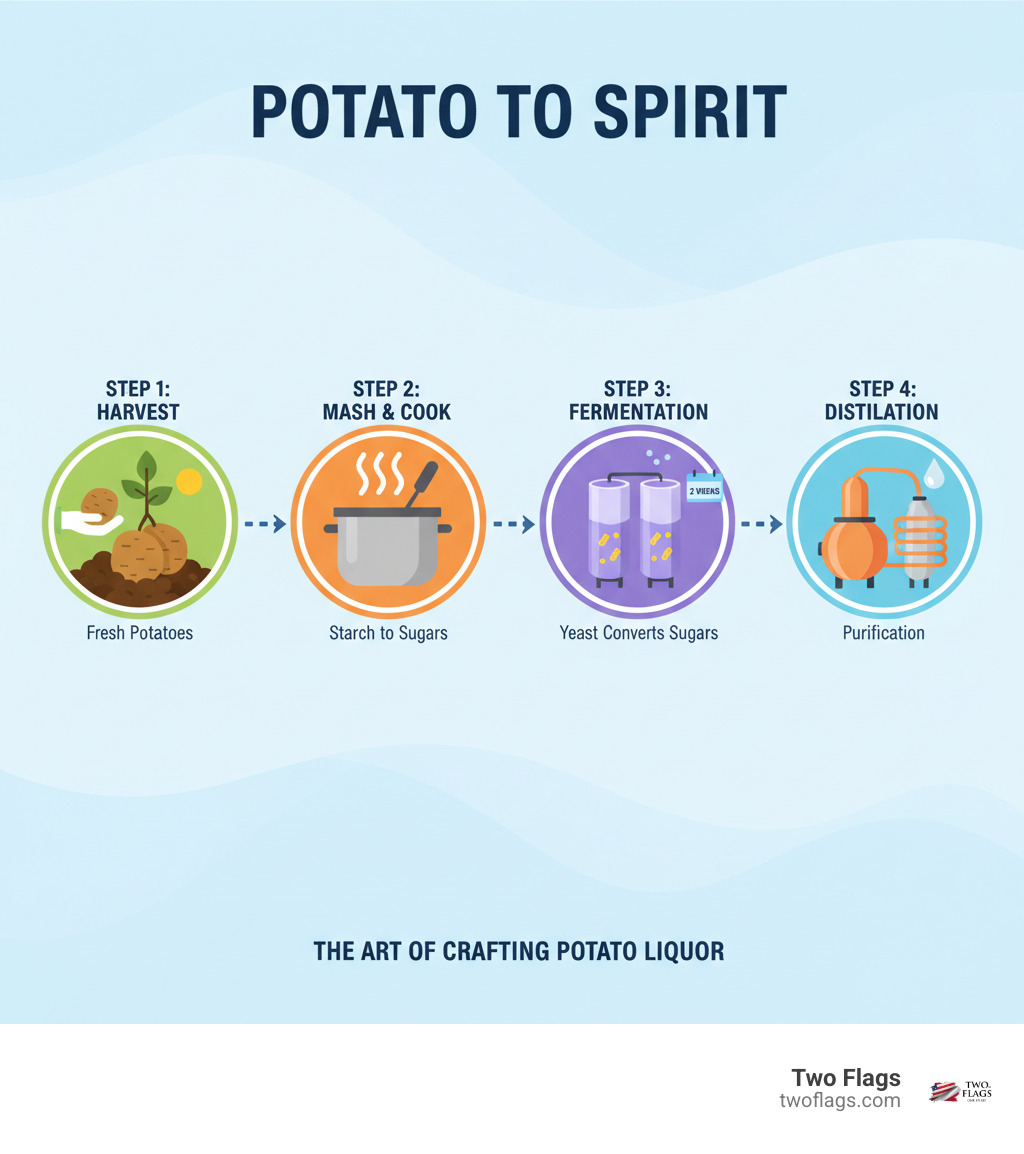
From Tuber to Tipple: The Science and History of Potato Alcohol
The change of potatoes into premium spirits tells a fascinating story of science meeting tradition. What started as a practical solution in 18th-century Europe has evolved into an art form that produces some of the world's most distinctive liquor from potatoes.
The process relies on a beautiful dance between chemistry and craftsmanship. Unlike grains that can be processed more directly, potatoes require special attention to open up their potential as a spirit base.
The Science Behind the Spud
Creating liquor from potatoes starts with understanding what makes these tubers tick. Potatoes are packed with starch - complex carbohydrates that exist in two main forms: amylose and amylopectin. Think of these as locked treasure chests that need the right keys to open.
The magic begins with gelatinization. When we cook potatoes by boiling or steaming, the starch granules absorb water and swell until their cell walls burst open. This makes the starch accessible to the enzymes that will do the heavy lifting.
Next comes enzymatic hydrolysis - the real star of the show. Natural enzymes, often introduced through malted barley or commercial preparations, break down those long starch chains into simple, fermentable sugars like glucose. These enzymes are particular about temperature, working best between 140-158°F. Too hot, and they'll quit on you entirely.
Finally, yeast enters the picture. These microscopic workers feast on the sugars we've created, converting them into ethanol and carbon dioxide through fermentation. For potato vodka, we aim for a starting gravity of around 1.065 - that's the sweet spot where yeast can work its magic most effectively.
Without this precise scientific ballet, we'd just have mashed potatoes instead of premium spirits.
A Rich History Rooted in Europe
The story of potato spirits begins in 18th-century Europe, where abundant potato crops offered an alternative to traditional grain-based spirits. Countries like Poland, Germany, and Russia finded that these humble tubers could produce exceptional alcohol.
Germany's Kartoffelschnaps has a particularly colorful past. What started in the 17th century really took off by the mid-1700s. The game-changer came in 1817 with the Pistorius still - an early version of today's column stills that made distilling potato mash much easier and cheaper.
This innovation sparked a boom in production, but it came with unintended consequences. The cheap, widely available potato spirits led to what Germans called the "Branntweinpest" (brandy plague) - a period of widespread alcoholism. Interestingly, some German factories and farms even paid workers in Kartoffelschnaps instead of money. The story of Germany's Kartoffelschnaps reveals the complex social impact of this innovation.
Polish vodka traditions run equally deep. For centuries, Polish distillers have perfected the art of creating premium spirits from potatoes. This heritage proved invaluable during grain shortages - especially during wartime when grain was needed for food, not spirits.
The technological shifts from pot stills to column stills revolutionized production, but the core principles remained the same. Potato-based spirits offered something grain spirits couldn't: a unique character with creamy texture and subtle earthiness.
Compared to grain spirits, potato mashes present different challenges. They're thicker, require more careful temperature control, and need specific enzyme action. But the reward is a spirit with distinctive character that many connoisseurs prize above all others.
Crafting Liquor from Potatoes: The Farm-to-Glass Process
Creating liquor from potatoes is like conducting an orchestra - every element must work in perfect harmony to produce something truly extraordinary. It's a dance between science and artistry that transforms humble tubers into liquid gold.
The process might look simple from the outside, but each step requires careful attention and years of experience to master. When I think about our journey at Two Flags, I'm reminded that this ancient craft connects us to generations of Polish distillers who perfected these techniques.
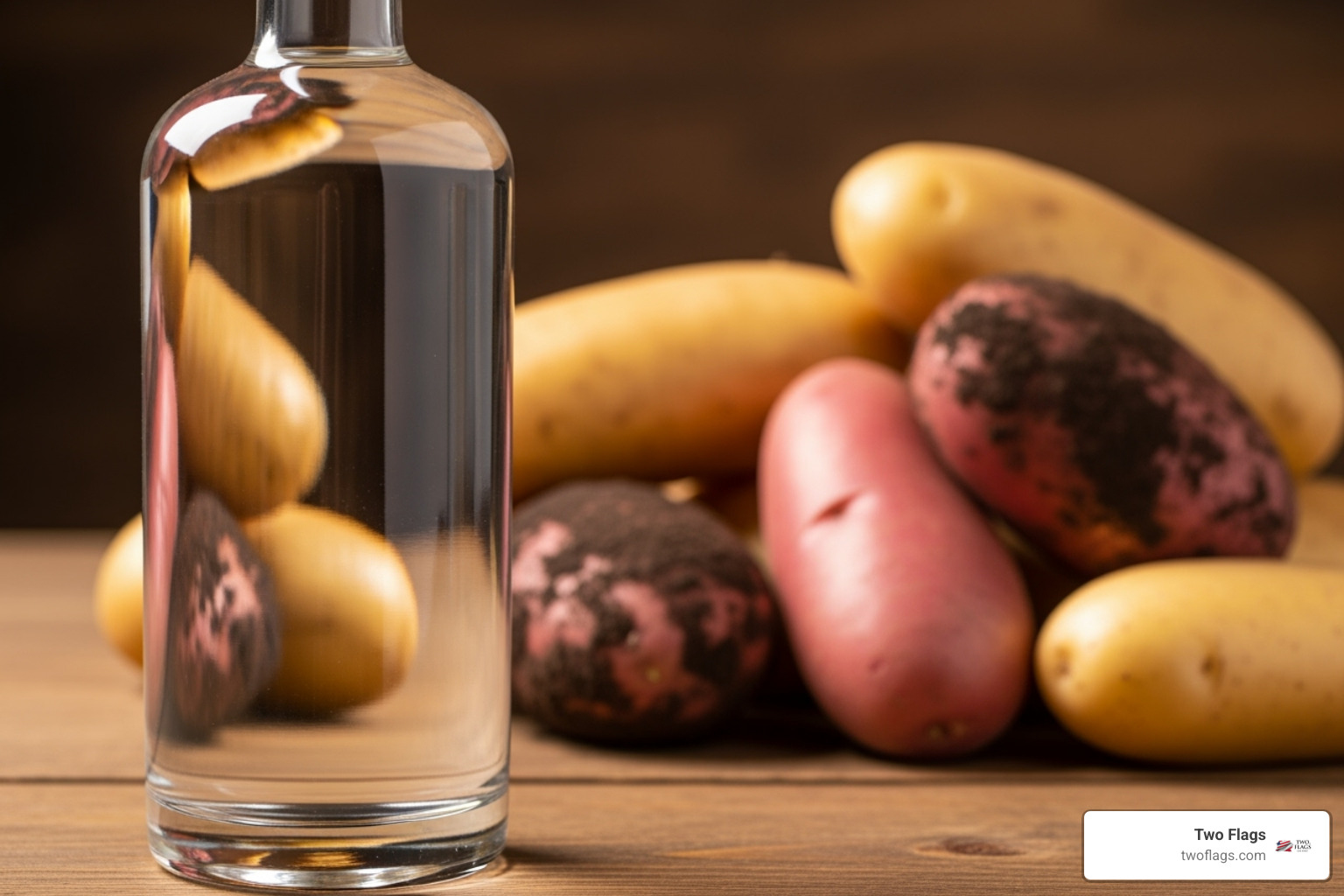
Choosing the Right Potatoes
Think of selecting potatoes for spirits like choosing grapes for wine - variety matters tremendously. Not every potato that makes great french fries will create exceptional vodka.
We're looking for high-starch content above everything else. Starch is our raw material, the foundation that becomes fermentable sugar. Russet potatoes are often our go-to choice because they're naturally packed with starch and have relatively low moisture content.
Yukon Gold potatoes bring something special to the table - they contribute a naturally buttery texture that translates beautifully into the final spirit. Some distillers swear by thin-skinned varieties like Kennebec for their clean taste profile, while others experiment with smaller potatoes that offer excellent starch yields.
Here's what we've learned through experience: avoid sweet potatoes unless you really know what you're doing. They can ferment, sure, but they sometimes introduce sulfur compounds that create off-flavors nobody wants in their glass.
Our commitment to quality starts at the source. That's why we focus on organic ingredients - because what goes into the ground eventually makes its way into your bottle.
Mashing and Fermentation
This is where the real change begins. We start by washing our potatoes thoroughly - you'd be amazed how much soil can hide in those little eyes and crevices. Then comes the cooking stage, where we steam or boil them until they're completely soft and the starch has gelatinized.
Creating the potato mash is honestly one of the messiest parts of the process, but it's absolutely crucial. We break down those cooked potatoes into a thick, porridge-like consistency. Every lump that remains is potential starch that won't convert properly.
The magic happens when we add malted barley or commercial enzymes. These little biological workers break down complex starches into simple sugars that yeast can actually use. Temperature control becomes critical here - we hold the mash at around 140°F, then bump it up to 150°F for specific time periods. Too hot, and we kill the enzymes. Too cool, and the conversion won't happen efficiently.
Water quality plays a bigger role than most people realize. Iron in the water can actually deactivate our precious enzymes, which is why we're so careful about our water source.
Once we've created our sugary "wash," it's time to cool everything down to the perfect temperature for yeast - usually between 65-75°F. We pitch our brewer's yeast (never use bread yeast for this!) and seal everything up with airlocks.
The fermentation takes about two weeks. It's like waiting for Christmas morning - you know something amazing is happening inside those vessels, but patience is key. We monitor the starting gravity with a hydrometer, aiming for around 1.065 to ensure our yeast has plenty of sugar to work with.
The Art of Distillation
Distillation is where science meets artistry in the most dramatic way. This is where our fermented potato wash transforms into the clear, potent spirit that will eventually become vodka.
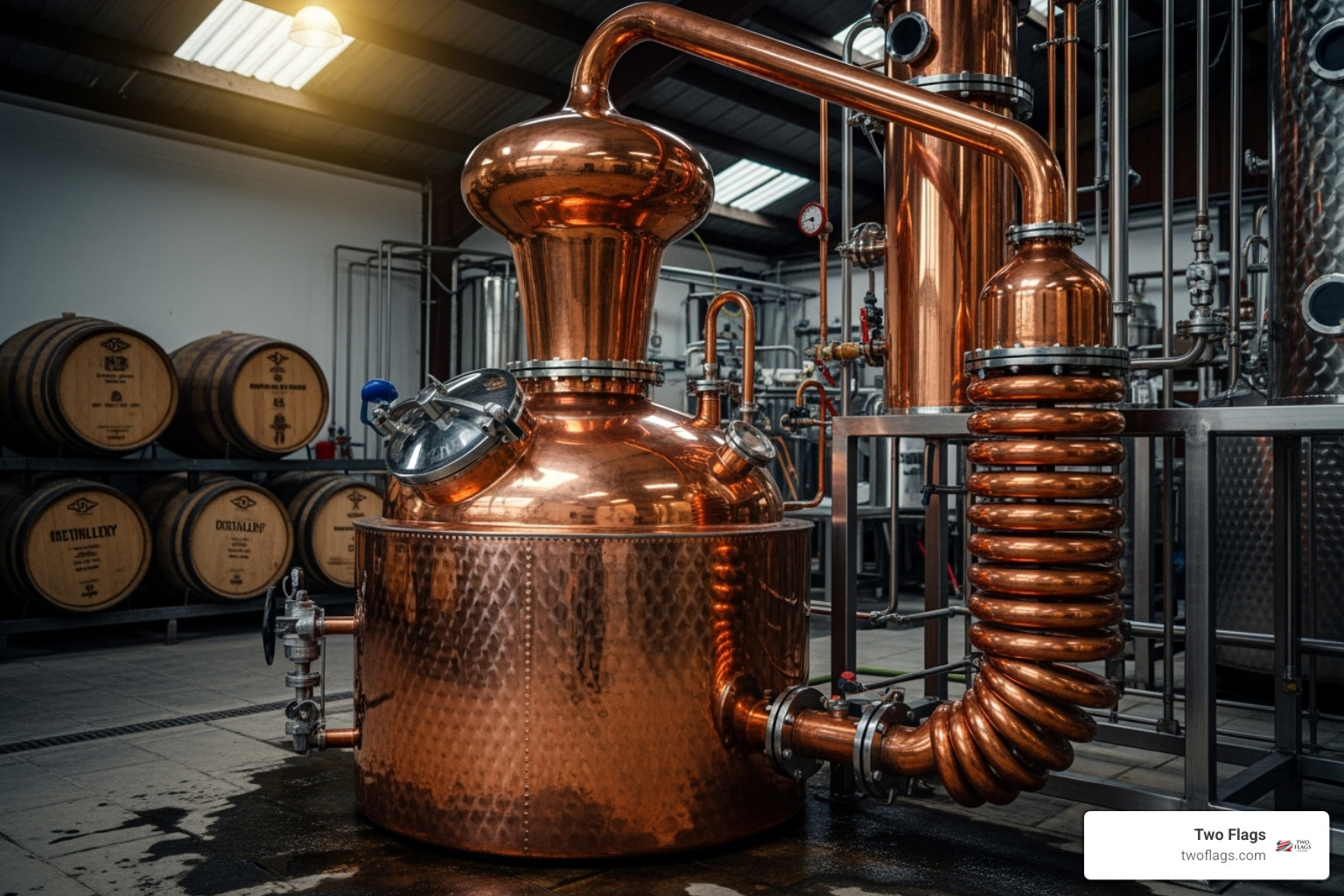
We have choices when it comes to stills. Pot stills are the traditionalists' choice - they're often made of copper and allow some of the original potato character to shine through. Column stills are the efficiency experts, capable of producing incredibly pure, high-proof spirits in a single run.
At Two Flags, we use traditional copper column stills, some dating back to the 19th century. There's something magical about copper - it doesn't just look beautiful, it actually reacts with and removes sulfur compounds that would otherwise create off-flavors.
The real skill comes in making the cuts. As the alcohol vapors condense back into liquid, we have to separate the good from the bad:
The foreshots come first - about 5% of the run that contains dangerous methanol. This stuff can literally blind you or worse, so it goes straight down the drain. No exceptions.
Next come the heads - roughly 30% of the run that smells like acetone and tastes even worse. These compounds are what cause brutal hangovers, so we discard most of them too.
The hearts are what we're after - about 30% of pure, smooth ethanol that becomes our final product. This is the treasure we've been working toward.
Finally, the tails contain heavier alcohols and compounds that create oily textures and off-flavors. Sometimes we'll collect these for redistillation, but they never make it into our premium spirits.
After distillation, our spirit often comes off the still at around 95% ABV - way too strong for drinking. We carefully dilute it with purified water to bottling strength and often filter it through activated carbon to achieve that crystal-clear purity.
This entire journey from potato to bottle is what makes liquor from potatoes so special. You can learn more about our complete vodka's production journey and see why we're so passionate about this ancient craft.
A Taster's Guide: The Unique Character of Potato Spirits
One of the most compelling reasons to explore liquor from potatoes is its distinctive sensory profile. While vodka is often mistakenly thought of as a flavorless spirit, experienced drinkers know that the base ingredient profoundly influences its character.
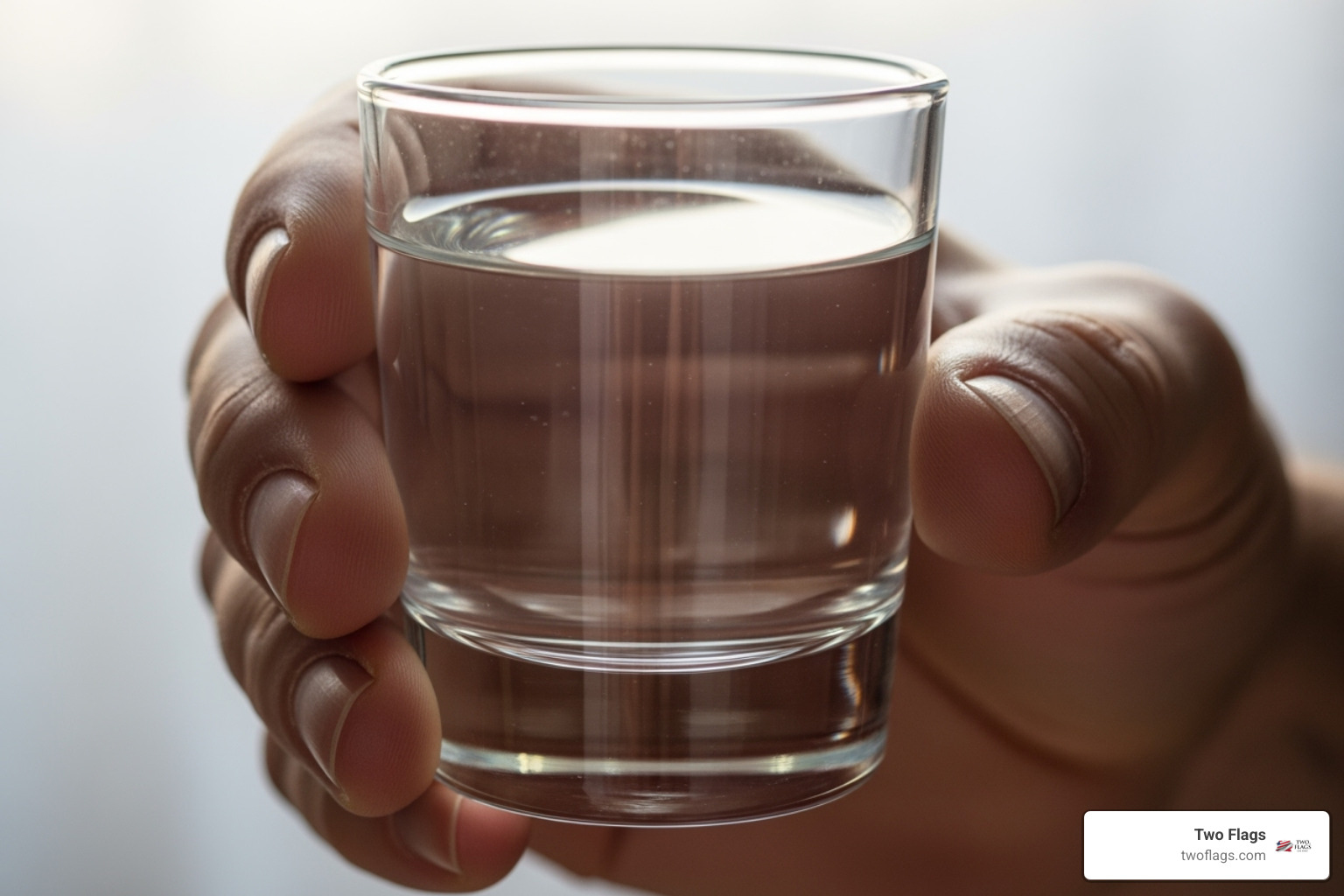
The Potato Vodka Profile
When you first taste a well-crafted potato vodka, the difference is immediately apparent. The most striking characteristic is its creamy, full-bodied mouthfeel that feels almost luxurious on your tongue. This isn't an accident - it's the direct result of the potato's natural composition and how it behaves during fermentation and distillation.
The flavor notes in potato vodka tend toward subtle sweetness with gentle earthy undertones. Some tasters detect hints of green apple or vanilla, while others notice a pleasant minerality. What you won't find is the sharp, peppery bite that sometimes comes with grain-based spirits.
Perhaps most impressive is how potato vodka delivers this richness while maintaining a clean, smooth finish. There's no harsh burn - just a long, satisfying finish that speaks to quality craftsmanship. This smoothness is exactly what we mean when we talk about finding what makes good vodka.
The Unique Qualities of Liquor from Potatoes
Beyond vodka, potatoes contribute their special character to several other alcoholic beverages. Potato beer might sound unusual, but it has a fascinating history. During times when barley was scarce, particularly during World War II, brewers turned to potatoes as an adjunct ingredient.
The potatoes don't dramatically change the beer's flavor - instead, they contribute fermentable sugars that boost alcohol content while adding subtle body. Some craft breweries have created well-received potato pale ales, proving this isn't just a historical curiosity.
Traditional German Kartoffelschnaps carries centuries of tradition and often has a sweeter, richer profile than grain spirits. Meanwhile, some Scandinavian aquavits use potato bases, which lend extra smoothness to these herb and spice-flavored spirits.
The sensory experience of liquor from potatoes can be described as smooth and creamy with an earthy, subtly sweet character. The full-bodied, viscous texture leads to a clean finish with a mild aroma - qualities that make these spirits stand out in any tasting.
A Naturally Gluten-Free Spirit
Here's where liquor from potatoes offers a significant advantage for many people: it's naturally gluten-free. For anyone with gluten sensitivities or celiac disease, this isn't just a nice bonus - it's essential.
Potatoes contain no gluten whatsoever. Even during distillation, the process effectively separates alcohol from any proteins that might be present. This means potato spirits are completely safe for those avoiding gluten.
At Two Flags, our Two Flags One Spirit proudly offers this gluten-free experience without compromising on taste or quality. If you want to dive deeper into this topic, check out the truth about gluten in vodka or explore more gluten-free drink options beyond traditional spirits.
The Modern Spud Spirit Scene
The world of liquor from potatoes might be small, but it's growing stronger every day. While potato spirits represent just a tiny slice of the global market, they're experiencing a renaissance thanks to craft distillers who appreciate tradition and consumers who crave something truly unique.
Think of it like artisanal bread versus mass-produced loaves - both serve a purpose, but one offers something special that keeps people coming back for more.
The Rise of Craft Liquor from Potatoes
The craft distilling movement has breathed new life into potato spirits, with innovative producers finding creative ways to showcase this humble tuber's potential.
Craft distilleries are leading this charge, even though only around three percent of vodka sold globally comes from potatoes. Many embody this spirit by focusing on that signature creamy texture and smooth mouthfeel that potato vodka lovers cherish. These distilleries often have ambitious plans, working to collaborate with major food producers to source local potatoes. This expansion shows how craft distillers are thinking beyond just making great spirits; they're building sustainable, local partnerships.
Craft breweries are getting in on the action as well. Some have created truly unexpected potato pale ales, with brewers noting how customers are genuinely surprised by how delicious the potato beer can be.
These examples from both distilleries and breweries prove that when producers accept potatoes' unique qualities, they create signature products that genuinely stand out in today's crowded marketplace.
Market Perception and Economics
The economics of liquor from potatoes tell a fascinating story of premium quality meeting practical challenges.
Premium perception drives much of the potato spirit market. These vodkas typically command higher prices because consumers recognize their unique flavor profile, luxurious creamy texture, and the traditional craftsmanship behind each bottle. Our Two Flags One Spirit, recognized as "Exceptional" by the Beverage Testing Institute, exemplifies this premium positioning while offering incredible value.
The small market share reality means potato vodka accounts for just 3% of global sales. This stems partly from grain-based vodkas' historical dominance and the unique challenges potato production presents.
Production costs create the biggest economic hurdle. Making liquor from potatoes requires more labor and raw materials than grain alternatives. Potatoes yield less fermentable sugar per pound compared to grains like wheat or rye, meaning distillers need significantly more potatoes to produce the same amount of alcohol.
The potato versus grain yield comparison reveals why many large-scale producers stick with grains. A field of potatoes might produce less fermentable sugar than the same acreage planted with grain crops, making mass production more challenging and potentially less profitable.
These economic realities keep potato spirits in the premium, craft segment - which honestly suits them perfectly.
Environmental Considerations
Sustainability matters more than ever, and potato spirit production presents both challenges and opportunities for environmentally conscious distillers.
Potato agriculture can be water-intensive depending on the region and farming methods used. However, sustainable farming practices can significantly reduce this impact while producing better-quality potatoes.
Land use considerations become important when scaling production, especially given potatoes' lower yield compared to traditional grains. This challenge pushes distillers toward more efficient, sustainable approaches.
Local sourcing represents a growing trend, with many craft distilleries planning to source local potatoes. This approach reduces transportation environmental impact while supporting local agriculture - a win-win situation.
Sustainable farming practices form the foundation of responsible potato spirit production. At Two Flags, we accept organic farming methods that prioritize soil health, careful water management, and avoiding synthetic pesticides and fertilizers. This commitment ensures our guide to organic vodka reflects genuine environmental responsibility.
These environmental considerations aren't just good business - they're part of the broader commitment to responsible production that defines the best craft and premium potato spirit brands today.
Frequently Asked Questions about Potato-Based Liquor
When people first find liquor from potatoes, they naturally have questions. After years of crafting Two Flags One Spirit from premium potatoes, I've heard these same questions countless times. Let me share what I've learned from both tradition and experience.
Does liquor from potatoes taste like potatoes?
This is probably the most common question we get, and I completely understand why people wonder about this. The short answer is no - liquor from potatoes doesn't taste like the mashed potatoes on your dinner table.
Here's what actually happens during distillation. When we heat the fermented potato wash in our copper stills, we're separating alcohol from everything else. The distillation process removes most of the original vegetable flavors, leaving behind something entirely different.
What you get instead is much more interesting. Potato spirits develop a unique creamy texture that feels luxurious on your tongue. There's often a subtle sweetness that's completely different from potato flavor - it's more like a gentle warmth that grain vodkas simply can't match.
You might also notice a slight earthiness that adds character without being overwhelming. Think of it as the spirit's way of honoring its origins without being dominated by them. This is what makes potato vodka so special and why connoisseurs seek it out.
Is all Polish vodka made from potatoes?
This is a wonderful question that touches on Polish vodka heritage. While Poland is absolutely famous for producing some of the world's finest potato vodka, not every Polish vodka comes from potatoes.
Historically, Polish distillers have used both potatoes and grains like rye for centuries. The choice often depended on what was available and what the distiller wanted to achieve. During certain periods, especially when grain was scarce, potatoes became even more important.
Today, rye is actually more common as a base for Polish vodka production. Many large-scale producers use rye because it's efficient and creates excellent spirits. However, the potato tradition remains a hallmark of premium and craft production.
At Two Flags, we honor this traditional Polish potato vodka heritage. Our family's journey from Poland to America taught us that the potato tradition represents something special - a commitment to quality and craftsmanship that you can taste in every sip.
Why is potato vodka more expensive?
The economics behind liquor from potatoes tell a fascinating story about quality versus efficiency. There are several reasons why potato vodka typically commands higher prices.
First, it takes significantly more potatoes by weight to produce the same amount of alcohol as grains like wheat or rye. Potatoes have lower starch content per pound compared to grains, so we need more raw material to achieve the same yield.
The production process is also more labor-intensive. Preparing potatoes requires washing, cooking, and creating a much thicker mash than grain-based spirits. This thicker consistency is harder on equipment and requires more careful monitoring throughout fermentation.
Managing the potato mash during fermentation and distillation requires more skill and attention. The process can't be rushed, and each step demands precision to achieve that signature creamy texture and smooth finish.
All these factors contribute to higher production costs, but they also create something truly special. When you taste the difference - that luxurious mouthfeel and clean finish - you understand why craft distillers and premium brands choose potatoes despite the extra effort and expense.
Conclusion
What a remarkable journey we've taken together, from field to glass! The story of liquor from potatoes is one that never gets old - it's a beautiful blend of old-world tradition, fascinating science, and the relentless pursuit of that perfect sip.
Think about it: we started with humble potatoes, the same ones you might have had for dinner last night, and finded how they transform into some of the world's most refined spirits. The process is almost magical - watching starch molecules dance their way into fermentable sugars, then witnessing yeast work its ancient alchemy to create alcohol.
The potato's unique contribution to the spirits world can't be overstated. While only 3% of vodka globally comes from potatoes, those who know quality understand why it's worth seeking out. That creamy texture that coats your palate, the full body that feels substantial without being heavy, and the subtle sweetness that whispers rather than shouts - these are the hallmarks of truly exceptional potato spirits.
And let's not forget one of the most practical benefits: liquor from potatoes is naturally gluten-free. For anyone dealing with celiac disease or gluten sensitivity, this isn't just a nice bonus - it's life-changing. You can enjoy premium spirits without worry, knowing that the distillation process and potato base have your back.
The tradition continues today through distilleries that honor centuries-old methods while embracing modern quality standards. At Two Flags, we're incredibly proud to carry this torch forward. Our Two Flags One Spirit represents everything we've discussed - the careful selection of potatoes, the meticulous attention to every step of production, and the commitment to creating something truly exceptional.
When you hold a glass of quality potato vodka, you're holding more than just a drink. You're experiencing a piece of European history, the result of scientific precision, and the dedication of craftspeople who refuse to compromise on quality. That's the magic of liquor from potatoes - it connects us to tradition while delivering an experience that's thoroughly modern and utterly satisfying.
Ready to experience this rich heritage yourself? Unveil the rich heritage of traditional Polish vodka and find what makes potato-based spirits so special. After all, some traditions are worth preserving - and savoring.


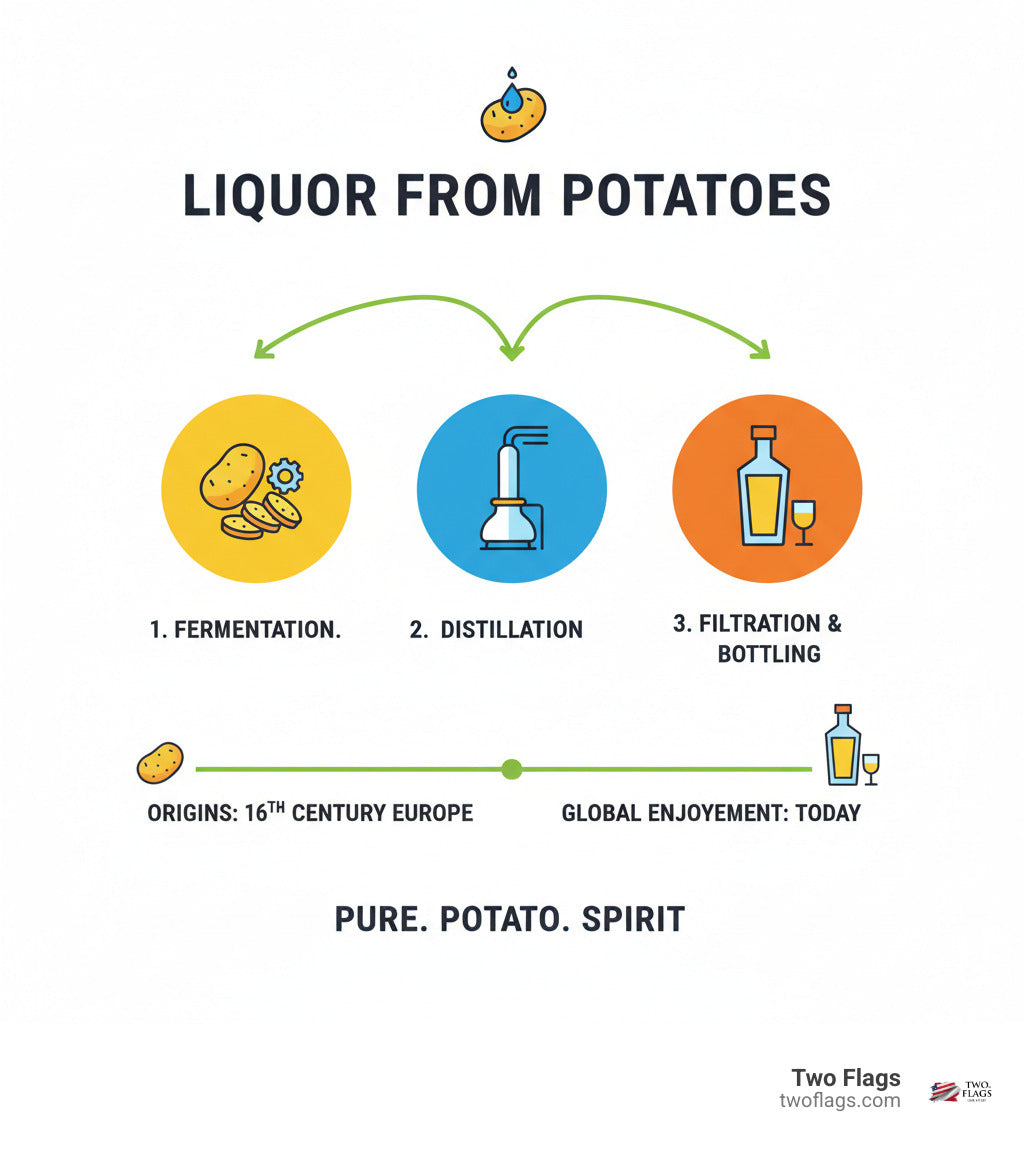
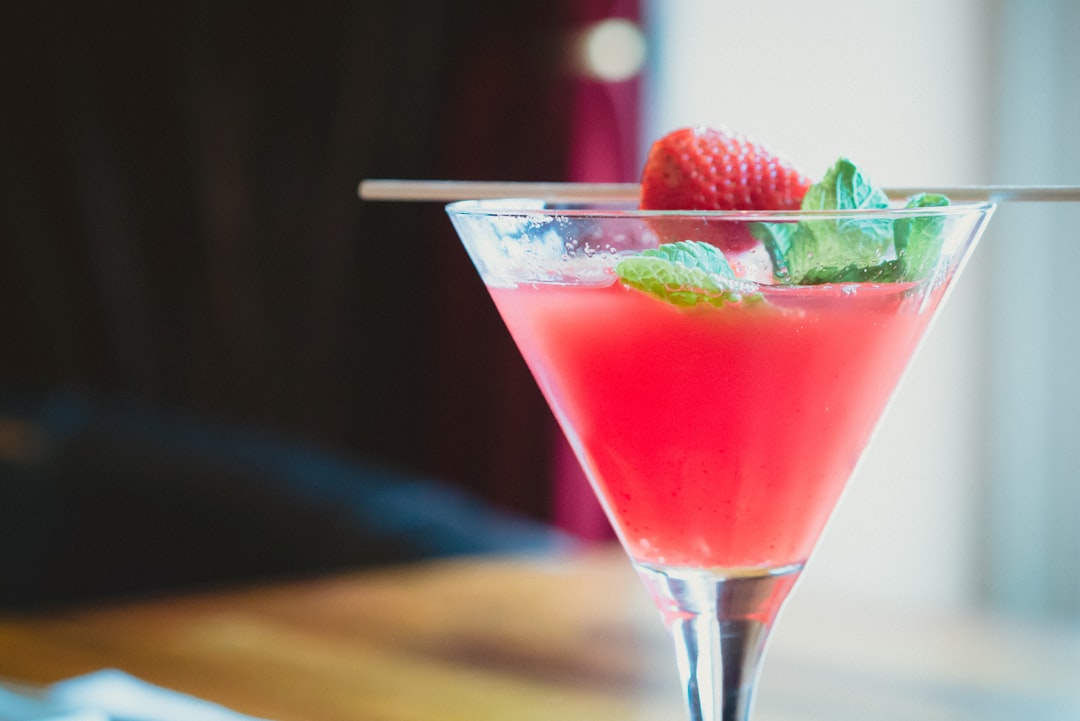


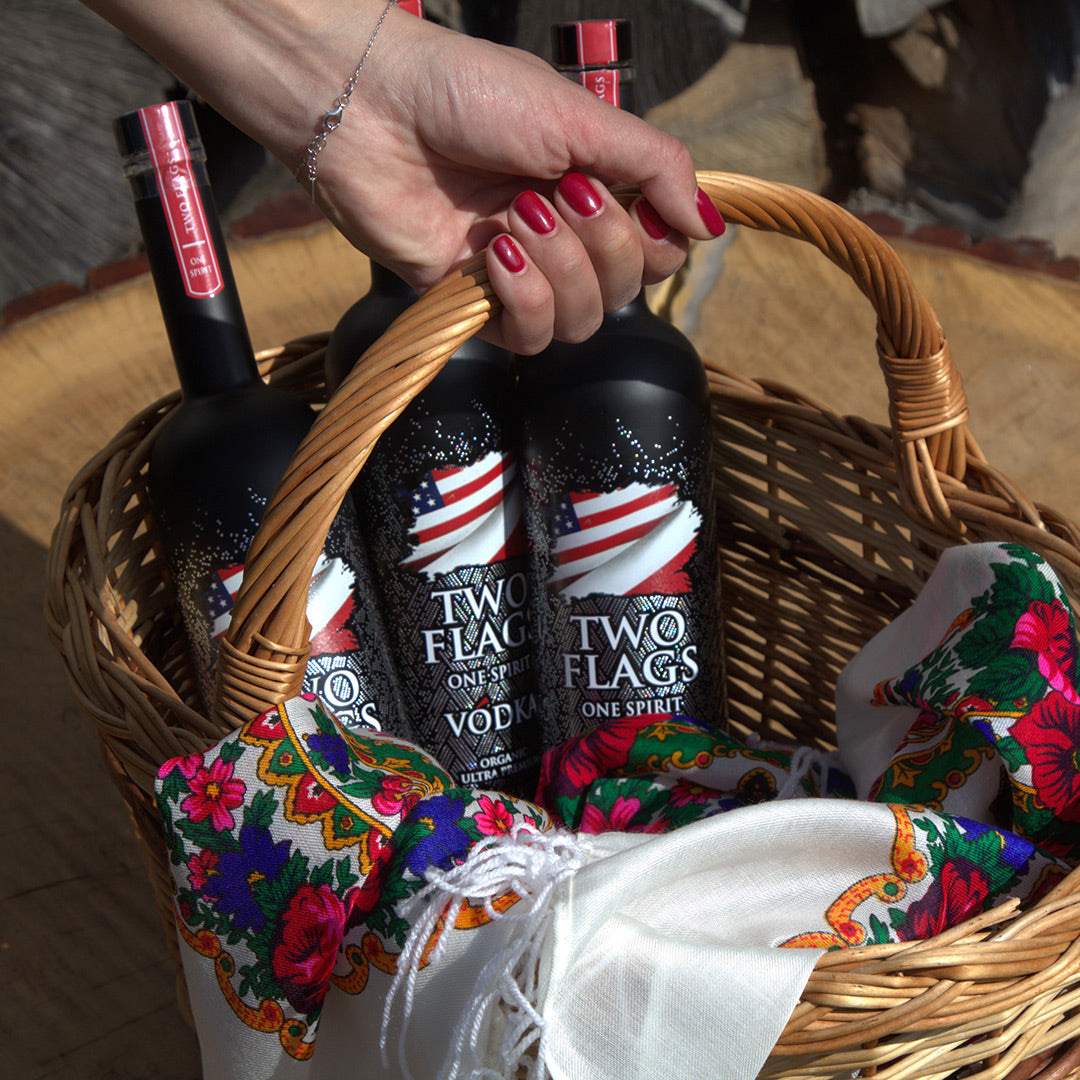




Leave a comment
This site is protected by hCaptcha and the hCaptcha Privacy Policy and Terms of Service apply.